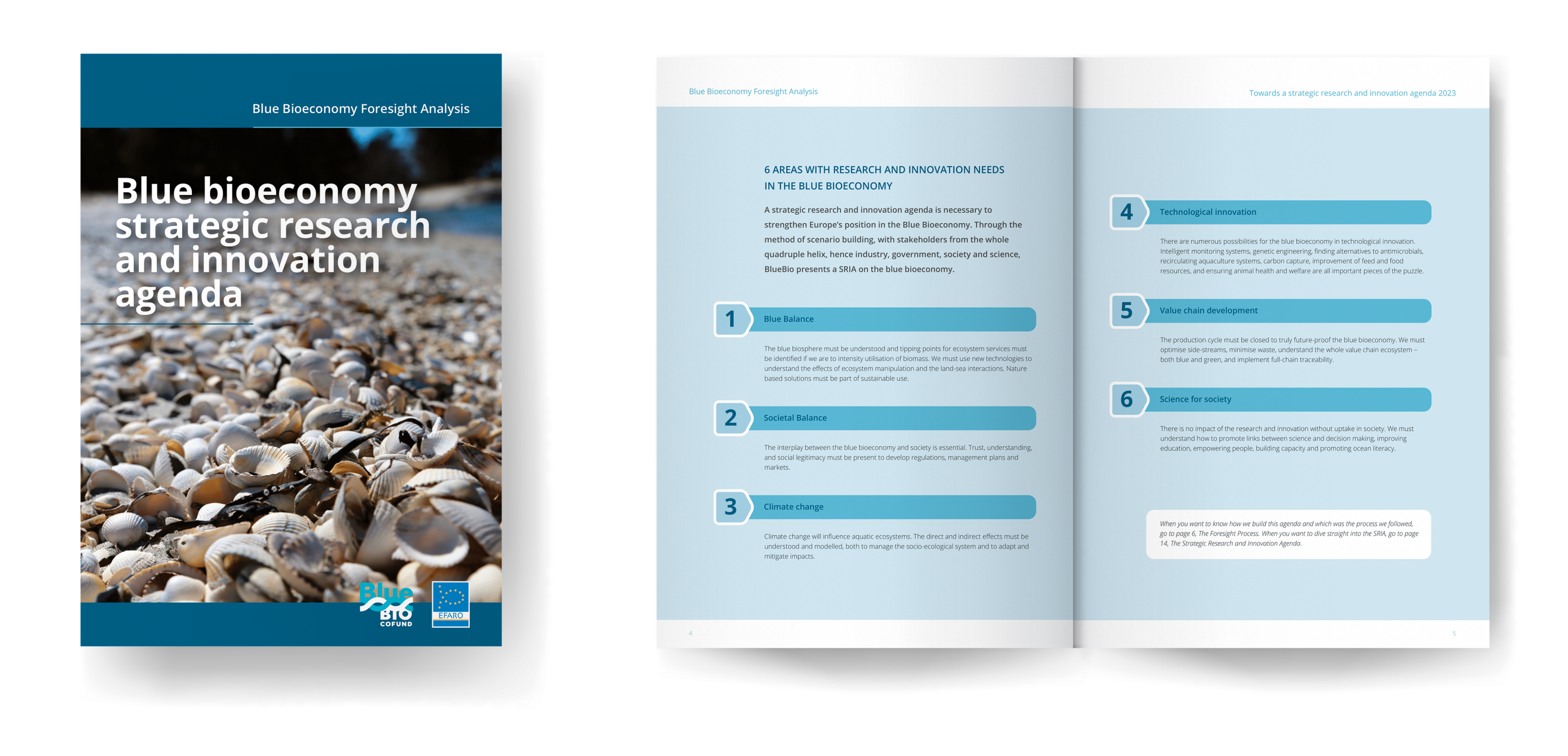The Blue Bioeconomy ERA-NET Cofund is launching a blue bioeconomy research agenda as a result of a foresight implemented in 2022. The foresight was part of Blue Bioeconomy ERA-NET Cofund’s mission of strengthening Europe’s position in the blue bioeconomy, working with facilitators Luc van Hoof and Sarah Smith from the European Fisheries and Aquaculture Research Organisations (EFARO – efaro.eu).
The blue bioeconomy research agenda presents research and innovation needs in the blue bioeconomy and is the result of scenario building with stakeholders from the whole quadruple helix, hence industry, government, society and science. BlueBio aims to bring bio-based products and services to the market and find new ways of creating value from the blue bioeconomy and the research agenda will aid all stakeholders in taking the best next steps.
The blue bioeconomy research agenda is built through a foresight process, based on a combination of foresight methodology and scenario building. Through a series of stakeholder workshops, the participants imagined the year 2050 and mapped the scenarios on possible future worlds, what the blue bioeconomy could look like in 2050, how to reach or avoid those future states, mapping the steps towards these possible futures to create research agendas for each of them. In the end, the commonalities between the research agendas for each future world, was made into the blue bioeconomy research agenda launched by BlueBio. The whole process is described in the report, for transparency and sharing of learning.
The research agenda is mapped over six areas, Ecosystem balance, Societal balance, Climate change, Technological innovation, Value chain development and Science for society. The blue biosphere must be understood and tipping points for ecosystem services must be identified if we are to intensity utilisation of biomass. We must use new technologies to understand the effects of ecosystem manipulation and the land-sea interactions. Nature based solutions must be part of sustainable use. The interplay between the blue bioeconomy and society is essential. Trust, understanding, and social legitimacy must be present to develop regulations, management plans and markets. Climate change will influence aquatic ecosystems. The direct and indirect effects must be understood and modelled, both to manage the socio-ecological system and to adapt and mitigate impacts.
There are numerous possibilities for the blue bioeconomy in technological innovation. Intelligent monitoring systems, genetic engineering, finding alternatives to antimicrobials, recirculating aquaculture systems, carbon capture, improvement of feed and food resources, and ensuring animal health and welfare are all important pieces of the puzzle. The production cycle must be closed to truly future proof the blue bioeconomy. We must optimise side-streams, minimise waste, understand the whole value chain ecosystem – both blue and green, and implement full-chain traceability. There is no impact of the research and innovation without uptake in society. We must understand how to promote links between science and decision making, improving education, empowering people, building capacity and promoting ocean literacy.
There are currently a number of important initiatives in Europe on furthering the blue bioeconomy, either as part of the blue economy or the circular economy and BlueBio is confident that the blue bioeconomy research agenda will be an important contribution. BlueBio is in communication with central partnerships under Horizon Europe, European networks and committees, to disseminate the findings and influence research agendas for the future. Please contact bluebio@bluebio.eu if you wish to collaborate with BlueBio on this topic.
Download the "Towards a blue bioeconomy research agenda" here.
